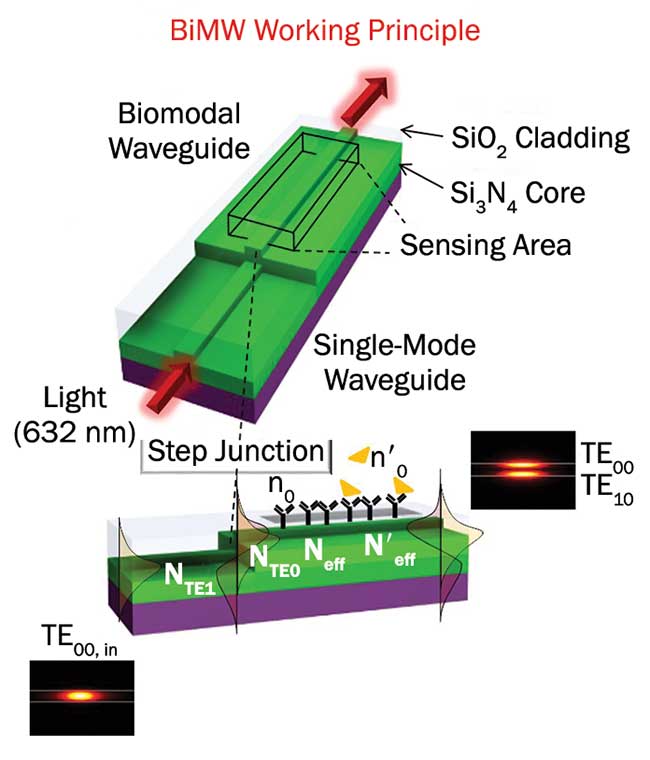While it’s early days for integrated photonics in medicine and the life sciences, its impact promises a health care revolution by bringing early diagnosis and point-of-care monitoring to the masses.
 Imagine testing for a host of diseases and conditions in a single sample of blood, saliva, urine or even a few tear drops. Cancers, heart conditions, viruses, food allergies and sepsis are just some of the tests that could be carried out using next-generation lab-on-a-chip concepts that are being explored and patented by today’s top researchers.
Such disposable chips could be loaded with the sample and then quickly analyzed using a computer, tablet or even a smartphone for fast diagnostic testing and simple disease monitoring and management.
It’s not just health care worldwide that could be transformed; a host of other applications stand to benefit from such scalable photonics — from environmental monitoring and food sorting to fingerprint detection and lighting to enhance health.
Compared with today’s often bulky lab equipment, which requires either the patient to visit a clinic or sending samples away for testing, integrated photonics could transform the health care system, reduce waiting times and costs as well as provide better care for patients worldwide. For those in rural or underdeveloped areas, it may bring direct access to doctors for the first time.
“What is really important is that such lab-on-chip sensors have been applied for real diagnostic applications of pathologies and conditions employing only few drops of bodily fluids such as blood, saliva, urine or tears,” said Laura Lechuga, leader of the Nanobiosensors and Bioanalytical Applications Group at the Catalan Institute of Nanoscience and Nanotechnology (ICN2), Barcelona, Spain. “This is opening the route to an instantaneous diagnostic for the identification of many diseases — such as cancer or infection — at a very early stage in a fast, simple and cost-effective way.”
Imagine testing for a host of diseases and conditions in a single sample of blood, saliva, urine or even a few tear drops. Cancers, heart conditions, viruses, food allergies and sepsis are just some of the tests that could be carried out using next-generation lab-on-a-chip concepts that are being explored and patented by today’s top researchers.
Such disposable chips could be loaded with the sample and then quickly analyzed using a computer, tablet or even a smartphone for fast diagnostic testing and simple disease monitoring and management.
It’s not just health care worldwide that could be transformed; a host of other applications stand to benefit from such scalable photonics — from environmental monitoring and food sorting to fingerprint detection and lighting to enhance health.
Compared with today’s often bulky lab equipment, which requires either the patient to visit a clinic or sending samples away for testing, integrated photonics could transform the health care system, reduce waiting times and costs as well as provide better care for patients worldwide. For those in rural or underdeveloped areas, it may bring direct access to doctors for the first time.
“What is really important is that such lab-on-chip sensors have been applied for real diagnostic applications of pathologies and conditions employing only few drops of bodily fluids such as blood, saliva, urine or tears,” said Laura Lechuga, leader of the Nanobiosensors and Bioanalytical Applications Group at the Catalan Institute of Nanoscience and Nanotechnology (ICN2), Barcelona, Spain. “This is opening the route to an instantaneous diagnostic for the identification of many diseases — such as cancer or infection — at a very early stage in a fast, simple and cost-effective way.”
Member Exclusive: To read the complete article, please Login or Register